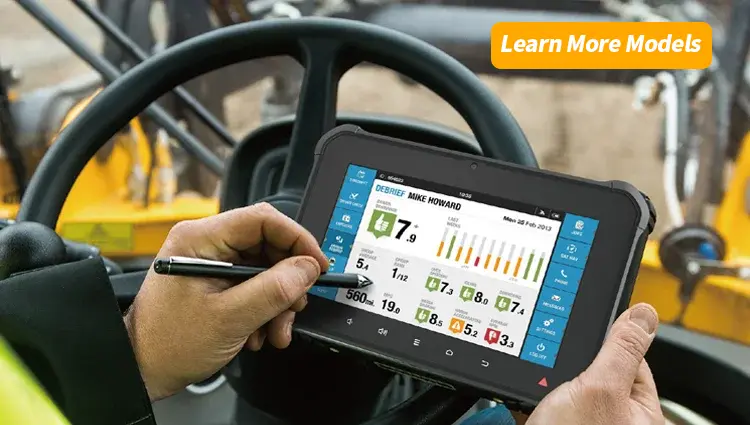The Ultimate Guide to Fleet Vehicle Management in 2025
Fleet vehicle management is a critical component for businesses that rely on vehicles to deliver goods, provide services, or manage operations. Whether you’re running a small delivery service or overseeing a large logistics network, effective fleet management can reduce costs, improve efficiency, and ensure compliance. This guide explores what fleet vehicle management entails, its benefits, key features of fleet management software, and how to choose the right solution for your business.

What is Fleet Vehicle Management?
Fleet vehicle management involves overseeing and optimizing a company’s vehicle fleet to ensure operational efficiency, safety, and compliance with regulations. It encompasses a range of tasks, including:
- Vehicle tracking and telematics: Monitoring vehicle locations, routes, and performance in real-time.
- Maintenance scheduling: Ensuring vehicles are serviced regularly to prevent breakdowns.
- Fuel management: Tracking fuel consumption to reduce costs.
- Driver management: Monitoring driver behavior, safety, and compliance with regulations.
- Compliance and reporting: Adhering to industry regulations, such as ELD mandates or emissions standards.
Effective fleet management minimizes downtime, enhances productivity, and improves customer satisfaction by ensuring timely deliveries and services.
Why is Fleet Vehicle Management Important?
Businesses with fleets face challenges like rising fuel costs, driver shortages, and regulatory pressures. A robust fleet management system addresses these issues by:
- Reducing Operational Costs: Optimizing routes and monitoring fuel usage can save thousands annually.
- Improving Safety: Real-time data on driver behavior helps reduce accidents and liability risks.
- Enhancing Efficiency: Automated scheduling and tracking streamline operations.
- Ensuring Compliance: Tools help meet DOT, FMCSA, or environmental regulations.
- Boosting Customer Satisfaction: Reliable deliveries and services build trust with clients.
Key Features of Fleet Management Software
Modern fleet management software integrates advanced technologies like GPS, IoT, and AI to provide comprehensive solutions. Here are the must-have features to look for:
1. Real-Time GPS Tracking
- Track vehicle locations, monitor routes, and receive alerts for unauthorized use.
- Example: Geotab offers geofencing to ensure vehicles stay within designated areas.
2. Maintenance Management
- Schedule preventive maintenance based on mileage or time intervals.
- Get alerts for upcoming services to avoid costly repairs.
3. Fuel Management
- Monitor fuel consumption and identify inefficiencies.
- Integrate with fuel cards to track expenses accurately.
4. Driver Behavior Monitoring
- Analyze speeding, harsh braking, or idling to improve safety.
- Provide feedback or training to drivers based on data.
5. Compliance Tools
- Automate Hours of Service (HOS) logging for ELD compliance.
- Generate reports for audits or inspections.
6. Reporting and Analytics
- Access dashboards with KPIs like fuel efficiency, vehicle utilization, and driver performance.
- Use insights to make data-driven decisions.

Top Fleet Management Software Solutions in 2025
Here’s a comparison of leading fleet management platforms to help you choose:
| Software | Key Strength | Best For | Free Trial |
|---|---|---|---|
| Samsara | Real-time tracking and ELD compliance | Large fleets, logistics | Yes |
| Fleetio | Maintenance and fuel management | Small to medium businesses | Yes |
| Geotab | Advanced analytics and scalability | Enterprises, mixed fleets | No |
| Verizon Connect | Driver safety and mobile app | Construction, service industries | Yes |
How to Choose the Right Solution
- Assess Your Needs: Identify pain points like fuel costs, compliance, or driver safety.
- Consider Scalability: Choose software that grows with your fleet.
- Evaluate Integration: Ensure compatibility with existing tools like accounting or CRM systems.
- Check User Experience: Opt for intuitive interfaces to reduce training time.
- Request Demos: Test platforms like Samsara or Fleetio to evaluate features.
Benefits of Implementing Fleet Management Software
- Cost Savings: Businesses can save up to 20% on fuel and maintenance costs, according to industry studies.
- Improved Productivity: Automation reduces manual tasks, freeing up time for strategic planning.
- Enhanced Safety: Telematics can reduce accident rates by 15-30% through better driver monitoring.
- Data-Driven Decisions: Analytics provide insights to optimize routes and fleet size.
Getting Started with Fleet Vehicle Management
- Audit Your Fleet: Document vehicle types, usage patterns, and current costs.
- Set Goals: Define priorities like reducing fuel costs or improving compliance.
- Research Solutions: Explore platforms like Samsara, Fleetio, or Geotab.
- Start Small: Pilot a solution with a few vehicles before full deployment.
- Train Your Team: Ensure drivers and managers are comfortable with the software.

Conclusion
Fleet vehicle management is no longer just about keeping vehicles on the road—it’s about leveraging technology to drive efficiency, safety, and profitability. Whether you’re researching solutions or ready to invest, choosing the right fleet management software can transform your operations. Explore free trials from providers like Samsara or Fleetio to find the perfect fit for your business.
For more information or to contact leading providers:
- Visit Samsara for real-time tracking solutions.
- Check out Fleetio for small business-friendly tools.
- Explore Geotab for enterprise-grade analytics.
Start optimizing your fleet today and stay ahead in 2025!








